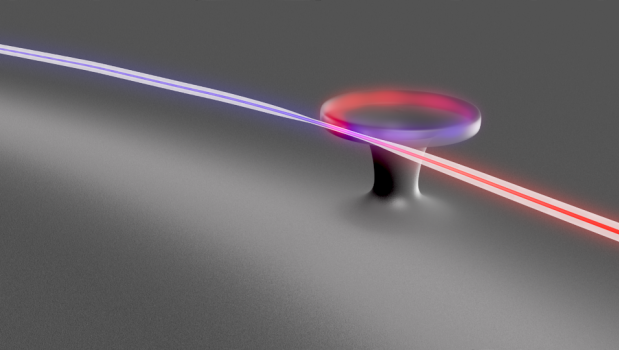Nonlinear frequency conversion in microdisk cavities

The figure above is a conceptual drawing of nonlinear frequency conversion in sub-10 µm diameter microdisk cavities. (Created by T. Thomay.)
We investigate nonlinear frequency conversion on the micrometer scale using tapered fibers and semiconductor microdisk cavities. We use semiconductors with large second-order nonlinear constants and which possess 4-bar crystal symmetry. Semiconductor choices include GaAs, GaP, ZnSe, ... These common materials can be processed using standard contact lithography techniques into microdisk cavities with quality factors in the high 103 to high 104 range.
The 4-bar crystal symmetry allows the fundamental and second harmonic to be quasi-phased matched (QPM). With this symmetry, a quarter rotation around the microdisk is equivalent to a crystal inversion. However, there are additional restrictions because of modal distribution of the cavity. The fundamental and second harmonic modes must be orthogonal and have a certain mode number relationship. For maximum conversion efficiency the fundamental and second harmonic must both be on resonance with cavity modes; however, this is not necessary in general.
We have a theory/simulation collaborator, Jorge Bravo-Abad. He is professor in the Condensed Matter Theory Department at Universidad Autónoma de Madrid.
